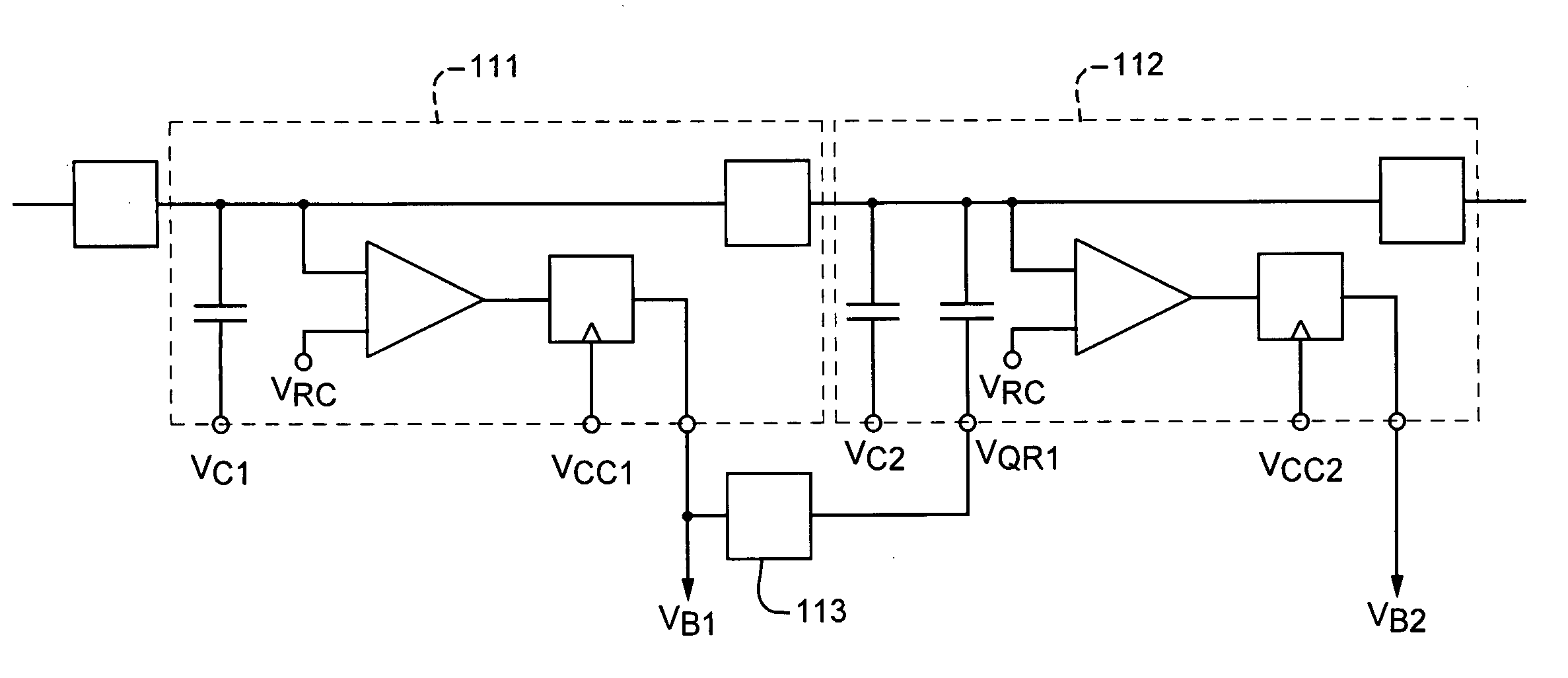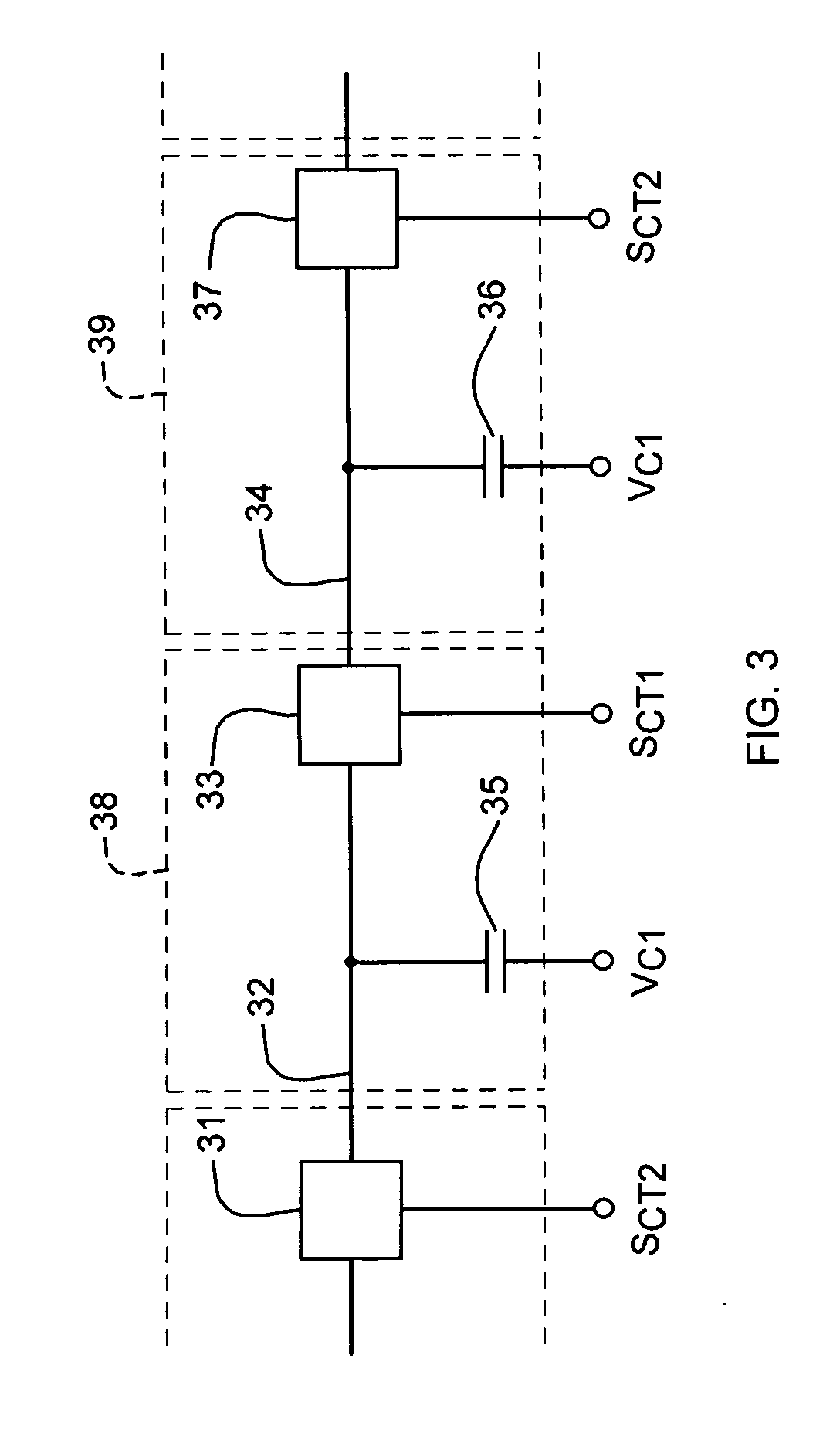Charge-domain pipelined charge-redistribution analog-to-digital converter
a digital converter and charge-redistribution technology, applied in the field of charge-domain signal processing circuits, can solve the problems of limitingconsuming relatively large power, etc., and achieves the effects of reducing the available resolution and linearity of such adcs, reducing the sample rate, and reducing the power consumption
- Summary
- Abstract
- Description
- Claims
- Application Information
AI Technical Summary
Benefits of technology
Problems solved by technology
Method used
Image
Examples
Embodiment Construction
[0023]A description of example embodiments of the invention follows. The teachings of all patents, published applications and references cited herein are incorporated by reference in their entirety.
[0024]Prior-art charge-redistribution ADCs have been implemented in a single stage, in which the signal input voltage is sampled onto a common node shared by an array of capacitors. The capacitors are then sequentially switched between reference voltages, in accordance with a successive-approximation algorithm. This capacitor-switching process re-distributes the sampled charge among the various capacitors of the array, resulting in a voltage change at the common node. At each step of the algorithm, the resulting common-node voltage is compared against a reference voltage, with the comparison result governing the next capacitor-switching event. This A / D conversion process is limited in sample rate, because the entire multi-step successive-approximation process must be completed for a given...
PUM
 Login to View More
Login to View More Abstract
Description
Claims
Application Information
 Login to View More
Login to View More - R&D
- Intellectual Property
- Life Sciences
- Materials
- Tech Scout
- Unparalleled Data Quality
- Higher Quality Content
- 60% Fewer Hallucinations
Browse by: Latest US Patents, China's latest patents, Technical Efficacy Thesaurus, Application Domain, Technology Topic, Popular Technical Reports.
© 2025 PatSnap. All rights reserved.Legal|Privacy policy|Modern Slavery Act Transparency Statement|Sitemap|About US| Contact US: help@patsnap.com



